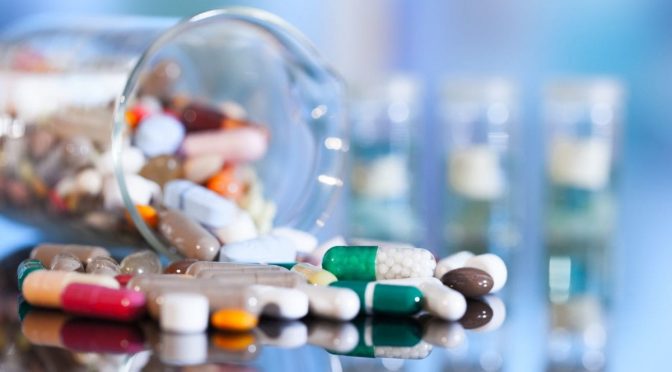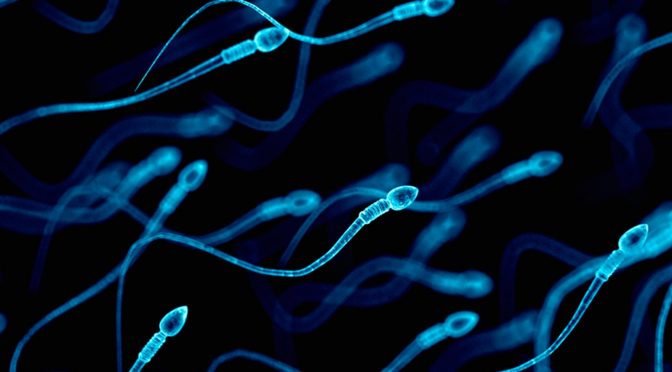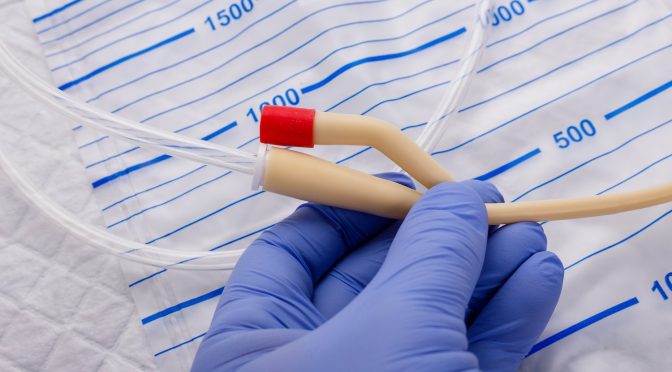Erectile dysfunction (ED) means that you cannot get a proper erection. There are various causes. However, most cases are due to narrowing of the arteries that take blood to the penis. This is due to a build-up of atheroma in these arteries. This is similar to the way the heart arteries are affected in people with heart disease. As with heart disease, smoking and heavy alcohol drinking are important risk factors. Most cases of ED can be treated. The common treatment is to take a tablet before you plan to have sex. There are also various other treatment options. If you have ED, you may also be advised on lifestyle factors and treatments to minimize your risk of developing heart disease
What is erectile dysfunction?
Erectile dysfunction (ED) means that you cannot get and/or maintain an erection. In some cases, the penis becomes partly erect, but not hard enough to have sex properly. In some cases, there is no swelling or fullness of the penis at all. ED is sometimes called impotence.
How common is erectile dysfunction?
Most men have occasional times when they cannot get an erection. For example, you may not get an erection so easily if you are tired, stressed, distracted, or have drunk too much alcohol. For most men, it is only temporary, and an erection occurs most times when you are sexually aroused. However, some men have persistent, or recurring, ED. It can occur at any age but becomes more common with increasing age. About half of men between the ages of 40 and 70 have ED. About 7 in 10 men aged 70 and above have ED.
How does an erection normally occur?
When you are sexually aroused, messages from your brain travel down nerves to your penis leading to the release of cyclic guanosine monophosphate (cGMP). An increase of cGMP causes the arteries in the penis to dilate widen). This allows extra blood to flood into the penis. The rapid inflow of blood causes the penis to swell into an erection. The swollen inner part of the penis also presses on the veins nearer to the skin surface of the penis. These veins normally drain the penis of blood. So, the flow of blood out of the penis is also restricted, which enhances the erection.
What causes erectile dysfunction?
There are several causes which tend to be grouped into physical and psychological.
Physical causes
About 8 in 10 cases of ED are due to a physical cause. If the ED is due to a physical cause, Erectile dysfunction (ED) means that you cannot get a proper erection. There are various causes. However, most cases are due to narrowing of the arteries that take blood to the penis. This is due to a build-up of atheroma in these arteries. Causes include:
Reduced blood flow to the penis. Like in other parts of the body, the arteries which take blood to the penis can become narrowed. The blood flow may then not be enough to cause an erection. Risk factors can increase your chance of narrowing of the arteries. These include: getting older; high blood pressure; high cholesterol; smoking; diabetes.
Diseases which affect the nerves going to the penis. For example, multiple sclerosis, a stroke, Parkinson’s disease, etc.
Diabetes. This is one of the most common causes of ED. Diabetes can affect blood vessels and nerves.
Injury to the nerves going to the penis. For example, spinal injury, following surgery to nearby structures, fractured pelvis, radiotherapy to the genital area, etc.
Side-effect of certain medicines. The most common are: some antidepressants; beta-blockers such as propranolol, atenolol, etc; some diuretics (‘water tablets’); cimetidine. Many other less commonly used tablets sometimes cause ED.
Alcohol and drug abuse.
Cycling. ED after long distance cycling is thought to be common. It is probably due to pressure on the nerves going to the penis, from sitting on the saddle for long periods. This may affect the function of the nerve after the ride.
Hormonal causes are rare. For example, a lack of a hormone called testosterone which is made in the testes.
Excessive outflow of blood from the penis through the veins (venous leak). This is rare but can be caused by various conditions of the penis. In most cases due to physical causes (apart from injury or after surgery) the ED tends to develop slowly. So, you may have intermittent or partial ED for a while, which may gradually get worse. In some cases, ED causes poor self-esteem, anxiety, and even depression. These reactions to ED can make the problem worse.
Mental heath (psychological) causes
Various mental health conditions may cause you to develop ED. For example:
- Stress. For example, due to a difficult work or home situation.
- Anxiety.
- Relationship difficulties.
- Depression.
Typically, the ED develops quite suddenly if it is a symptom of a mental health problem. The ED may resolve when your mental state improves. For example, if your anxiety or depression eases. However, some people become even more anxious or depressed when they develop ED. They do not realise it is a reaction to their mental health problem. This can make matters worse and lead to a vicious circle of worsening anxiety and persisting ED. As a rule, a psychological cause is more likely for the ED than a physical cause if there are times when you can get a good erection, even though most of the time you cannot. (For example, if you can get an erection by masturbating, or wake up in the morning with an erection.)
Erectile dysfunction, heart disease and other vascular diseases
Although ED can be caused by various conditions, about 7 in 10 cases are due to narrowing of the small arteries in the penis. The root cause of the narrowing of the arteries is caused by atheroma. Atheroma is like fatty patches or plaques that develop within the inside lining of arteries. (This is similar to water pipes that get furred up with scale.). Briefly, risk factors that can be modified and may help to prevent atheroma-related conditions from getting worse are:
Smoking. Smoking is one of the biggest risk factors for developing an atheroma related
condition. Smoking roughly doubles your chance of developing ED. Young smokers may not be aware that they have a much greater risk of developing ED by middle age compared with nonsmokers. If you smoke, make every effort to stop.
High blood pressure. Make sure your blood pressure is checked at least once a
year. If it is high, it can be treated.
If you are overweight, losing some weight is advised.
A high cholesterol. This can be treated if it is high.
Inactivity. We should all aim to do some moderate physical activity on most days of
the week for at least 30 minutes. For example, brisk walking, swimming, cycling, dancing, gardening, etc.
Diet. Aim to eat a healthy diet.
Alcohol excess.
Diabetes. If you have diabetes, good control of the blood sugar level and blood pressure can help to minimise the impact of diabetes on the blood vessels.
Note: ED is thought of as an ‘early warning signal’ that heart disease (or other cardiovascular diseases) may develop. A large international study found that men with ED are twice as likely to have a heart attack, 10% more likely to have a stroke and 20% more likely to be admitted to hospital with heart failure. This is why some of the tests listed below may be advised if you develop ED. Also, you are likely to be advised by your doctor on how to modify any risk factors listed above with the aim of preventing heart disease and other cardiovascular disease from developing.
What should I do if I develop persistent erectile dysfunction?
It is best to see your urologist. He or she is likely to discuss the problem, go over any medication you may be taking, and do a physical examination. This can help to identify, or rule out, possible underlying causes. Before treatment, your urologist may suggest some tests.
What tests may be done?
Depending on your symptoms, likely cause of the ED, age, etc, your doctor may suggest that you have some tests. These are mainly to check up on any risk factors listed above which increase the risk of developing narrowing of the arteries. Tests may include:
- A blood test to check the level of cholesterol and other lipids (fats).
- Blood sugar level.
- Blood tests to rule out kidney and liver disease.
- A urine test.
- A check of your blood pressure.
- A heart tracing (ECG).
- Other heart tests which are sometimes done, where appropriate, if heart disease is suspected.
Occasionally, ED is due to a hormonal problem. This is more likely if you have a low sex drive (libido) in addition to ED. In this situation a blood test to check the level of the hormones testosterone or prolactin may be advised. Tests to check the way the blood circulates through the penis, using scans or drug injections, are sometimes performed in hospital clinics.
What are the treatment options?
The following gives a brief summary of treatment options. There is a good chance of success with treatment. There are pros and cons of each treatment, and your doctor will advise further.
Have you considered your other medication?
As mentioned, some medicines can cause ED. Check the leaflet that comes with any medication that you take to see if ED is a possible side-effect. Do not stop any prescribed medication, but see your doctor if you suspect this as the cause. A switch to a different medicine may be possible, depending on what the medicine is for.
Medication (tablets taken by mouth)
The tablets work by increasing the blood flow to your penis. They do this by affecting cGMP, the chemical involved in dilating (widening) the blood vessels when you are sexually aroused (described above). They are sildenafil (Viagra®), tadalafil (Cialis®), and vardenafil (Levitra®). You take a dose before you plan to have sex. Because of the way they work, these medicines are called phosphodiesterase type 5 (PDE5) inhibitors. Tablets can treat ED caused by various underlying conditions. None of these tablets will cause an erection unless you are sexually aroused. There is a good chance that a medicine will work (about an 8 in 10 chance of it working well). However, they do not work in every case. There are pros and cons for each of the above, and your doctor will advise. For example, you may not be able to take certain tablets for ED if you have certain other medical conditions, or take certain other medicines. For example, you should not take a PDE5 inhibitor if you take nitrate medicines (including glyceryl trinitrate (GTN)) which are often used to treat angina. Also, if you take a certain type of medication, called alpha-blockers, for high blood pressure (doxazosin, indoramin, terazosin or prazosin) you need to wait until you are on a stable dose, as the combination with a PDE5 inhibitor can cause a sudden pressure drop.
Pelvic floor muscle exercises
The pelvic floor muscles are a group of muscles that wrap around the underside of the bladder and rectum. One of these muscles (the bulbocavernosus muscle) also partly wraps around the base of the penis. This is involved with preventing blood escaping during an erection, (as well as being active during ejaculation, and when emptying the urethra of urine when finishing at the toilet). A common treatment for incontinence in women is to strengthen the pelvic floor exercises. Studies suggest that strengthening the pelvic floor muscles in men can cure ED in some cases. To identify your pelvic floor muscles: firstly, contract the muscles that you would use to stop passing wind from your anus; secondly contract the muscles that you would use to stop the flow of urine. These muscles can be trained and strengthened.
Injection treatment
This was the most common treatment before tablets became available. It usually works very well. You are taught how to inject a medicine into the base of the penis. This causes increased blood flow, and an erection usually develops within 15 minutes. (Unlike with tablets, the erection occurs whether or not you are sexually aroused.)
Urethral medication
You can place a small pellet into the end of the urethra (the tube which passes urine and opens at the end of the penis). The pellet contains a similar medicine to that used for the injection treatment. The medicine is quickly absorbed into the penis to cause an erection, usually within 10-15 minutes.
Vacum devices
There are several different devices. Basically, you put your penis into a plastic container. A pump then sucks out the air from the container to create a vacum. This causes blood to be drawn into the penis and cause an erection. When erect, a rubber band is placed at the base of the penis to maintain the erection. The plastic container is then taken off the penis and the penis remains erect until the rubber band is removed (which must be removed within 30 minutes).
Penile prosthesis
A surgeon can insert a rod permanently into the penis. The most sophisticated (expensive) type can be inflated with an inbuilt pump to cause an erection. The more basic type keeps the penis rigid all the time.
Other treatments
Treating an underlying cause
For example, treating depression, anxiety, changing medication, cutting back on drinking lots of alcohol, or treating certain rare hormonal conditions may cure the associated ED.
Lifestyle and other advice
As mentioned above, ED is often a marker that heart disease or other cardiovascular diseases may soon develop. Therefore, you should review your lifestyle to see if any changes can be made to minimise the risk of developing these problems. For example, stop smoking if you are a smoker, take regular exercise, eat a healthy diet, etc. Also, your doctor may prescribe a statin drug to lower your blood cholesterol level if your risk of developing cardiovascular disease is high.
Counselling
Sometimes couple counselling, or sex therapy is useful. These are most useful if certain
psychological problems are the cause of, or the result of, ED. In some cases, sex therapy is used in addition to another treatment option.





0 Comment